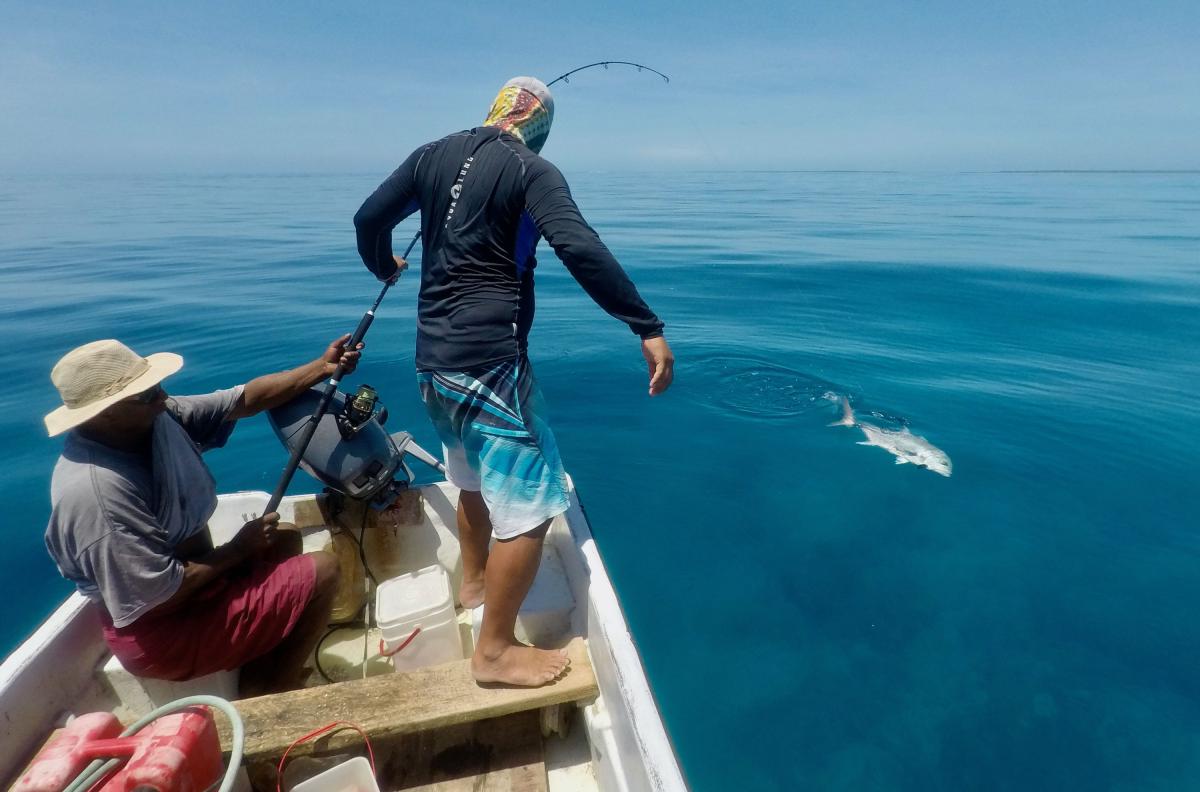
Photo Credit: Jacob Eurich
As climate change affects the oceans, coastal communities, particularly those at the front lines of ocean warming and sea level rise, are facing pressures that could threaten their access to aquatic foods.
“Climate change and other economic shocks are impacting how people access seafood, and typically households that are most reliant on seafood, such as those in Pacific Island countries, are most at risk,” said Jacob Eurich, a research associate at UC Santa Barbara’s Marine Science Institute, and a fisheries scientist at the Environmental Defense Fund. Which is why, he added, it is necessary to increase food system resilience in the area, which entails, among other things, the ability to maintain high levels of seafood consumption.
Fortunately, local strategies for doing so may already exist. In a study that appears in the Proceedings of the National Academy of Sciences, Eurich, UC Santa Cruz environmental studies Assistant Professor Katherine Seto and an international cohort of researchers assert that understanding and reinforcing the pathways through which individuals and households in these communities currently access nutritious food — as opposed to building new technologies and implementing new processes — is one way to effectively adapt to emerging environmental and economic changes.
Case in point: Kiribati, an island nation in the Pacific Ocean. Highly reliant on aquatic food from its waters, the local population is also faced with social forces such as the importation of food from abroad, as well as the biophysical forces of climate change. Food system resilience here requires good and consistent access to local seafood.
“We wanted to better understand how households benefit, or fail to benefit from seafood resources, because we think it’s something we often assume, and are rarely able to really explore,” said Seto, the study’s lead author.
To do so, the research team utilized the concept of access theory, which follows the flow of benefits (in this case high-quality nutrition) as the food makes its way from the ocean to the table. Rather than using the community’s proximity to seafood as a representation for their ability to gain nutrition, they traced the actual pathways by which I-Kiribati acquired seafood. Households with high seafood consumption were of particular interest to the researchers, to see what strategies they employed to gain access to seafood.
“We measured actual consumptive benefits from eating seafood, and the results about who benefits more and who benefits less are not as intuitive as you’d think,” Seto said.
“Thanks to the large dataset and machine learning algorithm, we were able to identify the importance of different variables from nested and interacting relationships and understand the distinct household strategies for ensuring benefit from seafood resources,” said co-author Whitney Friedman of UC Santa Cruz.
Indeed, the results showed that access to seafood markets was the key mechanism mediating seafood access in Kiribati, outpacing other drivers such as occupation, education, capital and technology.
“Market access is important for policy moving forward,” Eurich said. “Specifically, ensuring equitable access to markets is key.”
As they followed the seafood, the researchers noted a somewhat hidden pattern as well, something that would not have been obvious from a more conventional food system analysis.
“We were surprised to see that high seafood consumption households tended not to use formal markets and cash-based means and instead relied on home production and bartering for seafood acquisition,” Eurich said.
While households in general used combinations of strategies to acquire seafood, the highest seafood consumers tended to use the market the least. These populations included giftees in urban areas, pointing to the social, non-market aspect of seafood acquisition, as well as members of the community that did their own fishing and gleaning and also used the catch to trade, bypassing the market. The high consumers that used the market the most belonged in the smallest group, consisting of wealthy, affluent and urban households.
“From a policy perspective, promoting social networks through things like fisher groups or cooperatives could reinforce healthy seafood diets in addition to the commonly proposed food system interventions, including addressing supply chain inefficiencies,” Eurich said.
The results of the study also revealed a distinct pattern of consumption — different households ate different seafoods. “This means that household strategies are not only important in shaping the overall consumptive benefit a household gets from seafood,” Seto said, “but also the potential environment, food security and nutritional implications, as all seafoods are not the same.”